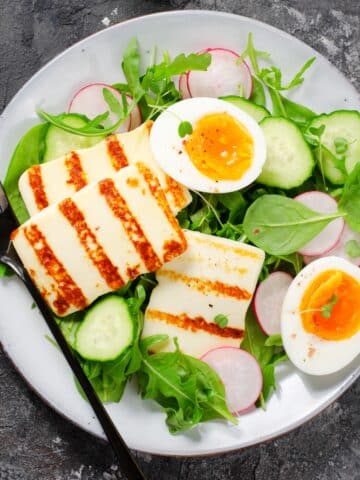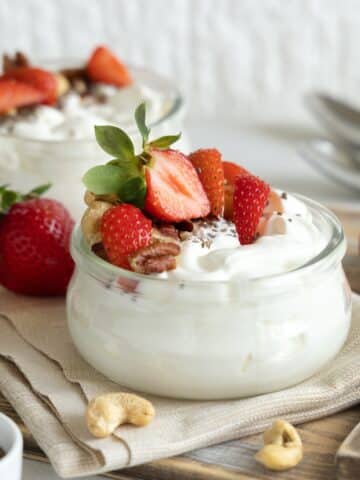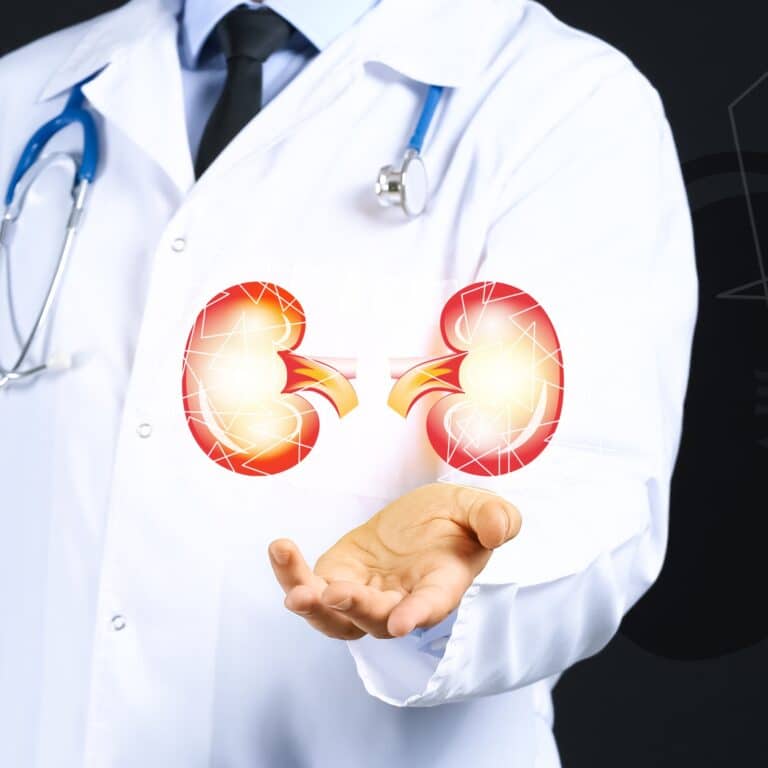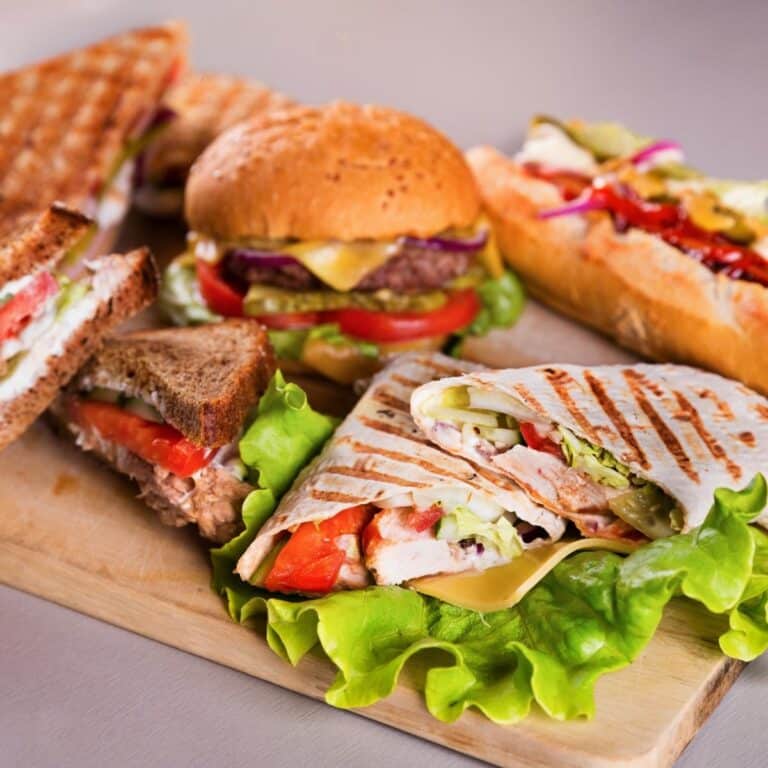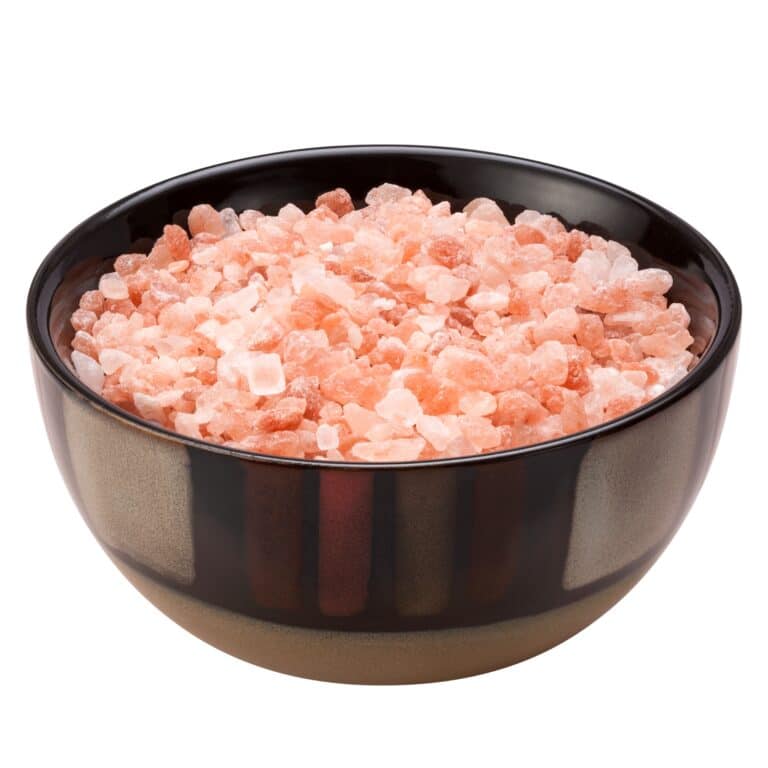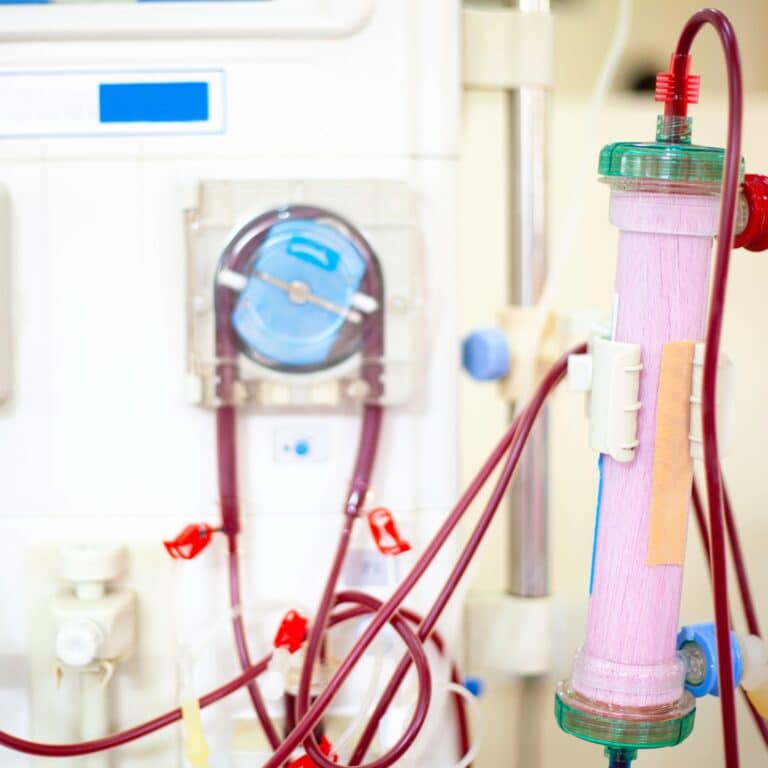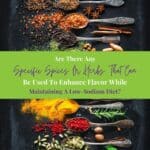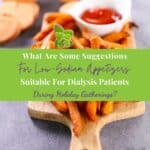Holiday Eating Tips For Dialysis Patients
As someone caring for a loved one on dialysis, you're always looking for ways to make their life better and healthier. The holidays can be particularly tricky, with all the indulgent foods that may not fit into a renal diet. Thankfully, you don't have to sacrifice taste or tradition.
With smart swaps and mindful choices, you can serve up a festive feast that's both delicious and kidney-friendly. From selecting low-fat turkey as your centerpiece, balancing side dishes with low-potassium vegetables, to choosing apple or cranberry pie over high-potassium desserts. There are plenty of ways to enjoy holiday favorites while staying within ckd diet guidelines.
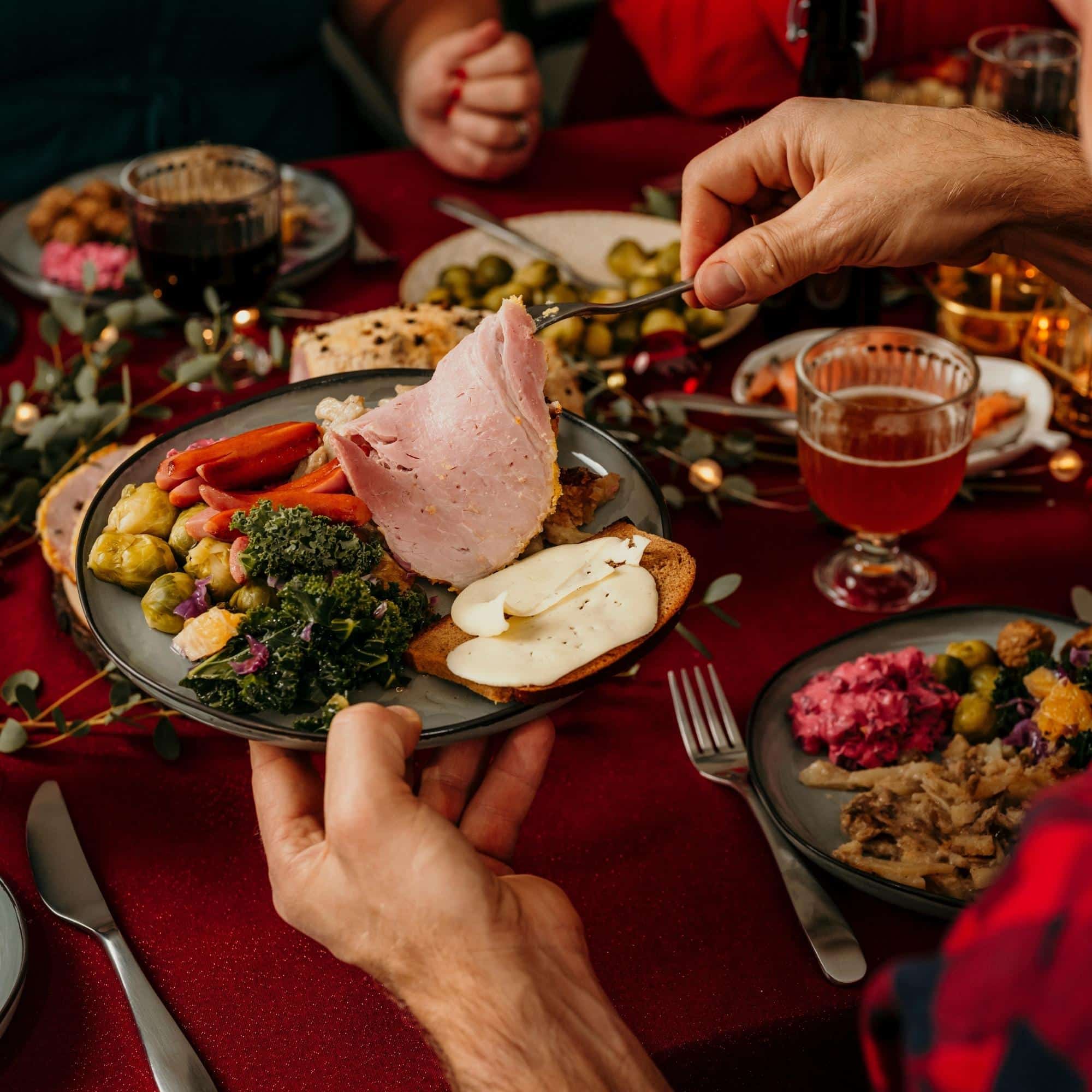
This article will give you tips on how to manage salt intake (salt substitute for kidney patients), choose the right foods, and even tackle leftovers in a healthy way. Remember: it's about making informed decisions without losing out on holiday joy!
Key Takeaways
- Dialysis patients with chronic kidney disease face dietary restrictions due to compromised kidney function, requiring sodium, potassium, and phosphorus management, along with adequate protein intake.
- Be cautious of hidden salt in holiday foods. Make homemade stuffing, opt for low-sodium alternatives, and choose non-dairy toppings to manage salt intake. Be mindful of canned vegetables, cheeses, and cured meats for hidden sources of salt.
- Manage phosphorus intake by controlling portion sizes, choosing low-phosphorus alternatives, and prioritizing fresh, whole foods over processed options. Soaking high-phosphorus foods before cooking can help reduce phosphorus content.
- Maintain a low potassium diet by identifying high-potassium foods, opting for lower-potassium alternatives, and balancing portion sizes. Experiment with cooking methods that reduce potassium content and communicate dietary needs with hosts.
- Some holiday foods contribute to fluid intake. Gelatins and gravy count as liquids. Being mindful of fluid intake is crucial. Stay aware of sodium and potassium levels, opt for low-sodium butter and cheese, and consider homemade desserts with alternative sweeteners and portion control.
Jump to:
- Key Takeaways
- Understanding Dietary Restrictions
- Reducing Salt Intake
- Managing phosphorus limits
- Low Potassium Diet on Holidays
- Fluid Considerations
- Homemade Meal Benefits
- Smart Meat Selection
- Switching to Low-Sodium Soup
- Unsalted Butter and Cheese
- Side Dishes for a Healthy Renal Diet
- Healthy Holiday Desserts
- FAQs for Holiday Eating Renal Diet
- Being On A Dialysis Diet Shouldn't Stop You From Enjoying The Holidays
Understanding Dietary Restrictions
Dialysis patients at the later stages of chronic kidney disease face significant dietary restrictions to manage their health effectively. Since their kidneys are compromised, they struggle to filter waste products and regulate electrolytes, requiring careful dietary management.
Restricting sodium intake is crucial, as excessive sodium can lead to fluid retention and high blood pressure. Potassium levels must also be controlled to prevent heart rhythm abnormalities. Patients often need to limit high-potassium foods like bananas and potatoes.
Phosphorus control is essential to prevent bone and cardiovascular complications, meaning patients should minimize phosphorus-rich foods such as dairy products and processed foods. Adequate protein intake is necessary to prevent malnutrition, but excessive protein can strain the kidneys, so protein intake must be monitored and tailored.
Fluid intake must be monitored closely since dialysis patients struggle to eliminate excess fluids, leading to swelling and cardiovascular strain. Fluid restrictions help manage these issues. Furthermore, patients are advised to avoid high-purine foods (found in organ meats and certain seafood) to prevent excess uric acid buildup.
All these considerations should not be forgotten even on a holiday like Thanksgiving (kidney friendly thanksgiving recipes). It is not prohibited to indulge and share a good time; just keep your limits in mind, and you’re good to go!
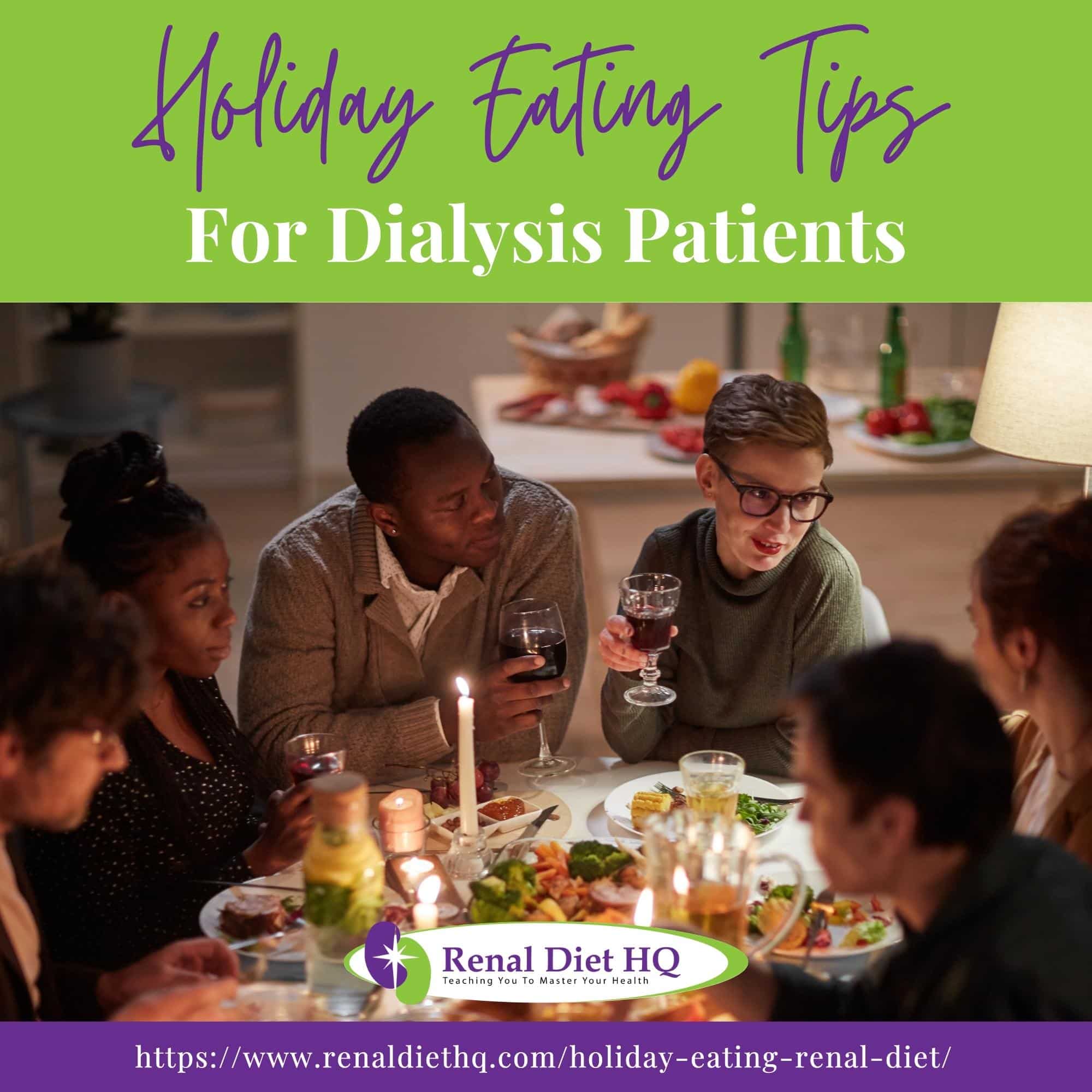
Reducing Salt Intake
You're probably aware, but too much salt can really mess with your thirst and complicate your treatments. Many holiday foods are loaded with hidden salt sources that you might not even be aware of. Being mindful about salt consumption during the holidays means digging a little deeper into those festive recipes and making smart substitutions where necessary.
- Homemade Stuffing: Instead of using sodium-rich ingredients like pre-packaged stuffing mixes or broths, consider making your own from scratch using low-sodium alternatives. Fresh herbs and spices can add flavor without adding extra salt.
- Ice Cream Alternatives: Ice cream often accompanies holiday pies and desserts, but it can be high in sodium. Consider non-dairy toppings or whipped cream as a lower sodium alternative.
- Hidden Salt Sources: Be on the lookout for hidden sources of salt in things like canned vegetables, cheeses, and cured meats. Opt for fresh versions when possible to keep those sneaky salts at bay.
Remember, it's all about balance – enjoying the festivities while keeping your health in check. So go ahead and have that slice of pie! Just remember to stay mindful about limiting salt intake so you can savor every bite without worry.
Managing phosphorus limits
Managing phosphorus intake for dialysis patients during the holidays requires thoughtful planning. Since festive meals often include high-phosphorus foods like dairy products, nuts, and processed foods and CKD, patients must be cautious.
First, portion control is key, enjoying small servings of phosphorus-rich foods can help limit intake. Opting for low-phosphorus alternatives if needed like almond or rice milk can reduce phosphorus load.
Choosing fresh, whole foods over processed ones is advisable. Prioritizing lean proteins like turkey or chicken and incorporating fruits and vegetables low in phosphorus, such as green beans and apples, can help maintain a balanced diet. You might even wonder if you should use fresh or canned vegetables for a renal diet.
Soaking high-phosphorus foods like beans before cooking can reduce phosphorus content.
Substituting traditional holiday recipes with low-phosphorus ingredients can be creative and health-conscious. For example, mashed cauliflower instead of mashed potatoes or low-phosphorus desserts can be delicious alternatives.
Communication with hosts is essential, informing them of dietary restrictions enables them to prepare suitable options. Bringing a dish to share ensures there's a safe option available. Staying hydrated without overdoing fluids is also crucial.
Consulting a dietitian for holiday-specific guidance can help dialysis patients navigate festive meals while managing their phosphorus intake, ensuring a joyful and health-conscious holiday season.
Low Potassium Diet on Holidays
Maintaining a low potassium diet for dialysis patients during the holidays requires strategic planning to ensure enjoyment while adhering to dietary restrictions. So, feel free to check out a low potassium diet for kidney disease.
Start by identifying high-potassium foods like bananas, oranges, potatoes, and tomatoes, which are commonly present in holiday meals. Opt for lower-potassium alternatives such as apples, berries, green beans, and rice.
Balancing portion sizes is crucial, as even low-potassium foods can contribute to elevated levels if consumed excessively. Cooking methods can make a difference – boiling vegetables can leach out potassium, while baking or steaming can retain flavors with less potassium content.
Careful menu selection is key during holiday gatherings. Communicate dietary needs with hosts and offer to bring dishes that adhere to low-potassium requirements. Experimenting with herbs and spices can enhance flavors without relying on high-potassium seasonings.
Avoiding processed foods, which often contain added potassium, is important. Reading labels and choosing fresh, whole ingredients helps in keeping potassium intake in check. Incorporating adequate fluid intake without overdoing it is also crucial.
Collaborating with a dietitian for personalized guidance and meal planning ensures that dialysis patients can enjoy holiday festivities while maintaining their low potassium diet, promoting overall health and well-being.
Fluid Considerations
When it comes to fluid considerations, it's important to remember that certain foods can contribute significantly to your fluid intake. Gelatins and gravy, for example, are items commonly found on holiday tables that count as liquids. Gelatin desserts, although delicious, are essentially water-based and should be counted towards your daily fluid allowance (water rich foods).
Similarly, gravy may not seem like much when poured over your turkey or homemade stuffing, but these little additions can add up quickly. It's crucial to remain mindful of this fact while indulging during festive meals.
In managing your kidney health effectively, awareness plays a significant role. You need to consider every aspect of your meal, from the sodium in homemade stuffing to non-dairy topping alternatives for desserts.
So go ahead and enjoy the festivities and food! Just always bear in mind what and how much you're eating or drinking. By being empowered with knowledge about your dietary needs, you can ensure a happy and healthy holiday season without any unwanted complications or setbacks related to your dialysis treatment.
Homemade Meal Benefits
Opting for homemade meals can make a world of difference in managing your kidney health while still enjoying delicious food. The benefits are numerous and extend beyond mere nutrition.
You have complete control over what goes into your meal, allowing you to monitor sodium and potassium levels effectively. It's an opportunity to explore creative, flavorful recipes that cater specifically to your dietary needs.
Convenience is another significant factor. Sure, it might take a little more time and effort than ordering takeout or buying pre-packaged foods, but the satisfaction derived from creating a delightful meal from scratch is unparalleled. Plus, you'll know exactly what you're eating, no hidden salts or preservatives.
Furthermore, cooking at home gives you the freedom to experiment with flavors while adhering to dietary guidelines. You can create dishes that satisfy both your taste buds and nutritional requirements without compromising on either.
Remember that managing a renal diet doesn't mean sacrificing flavor or enjoyment of food. With planning and creativity, homemade meals can provide superior nutrition tailored specifically for dialysis patients while also delivering incredible taste experiences that bring joy to holiday celebrations.
Smart Meat Selection
You can enjoy the main course, turkey! It is low in fat (without the skin) and healthy. Just make sure if you are on a low protein diet that you eat about 3-4 ounces which usually looks about the size of a deck of cards. Add a little gravy and you are set with this yummy entrée.
If you are on dialysis, you can eat more protein since your diet requires higher levels of protein. So, eat turkey accordingly. PS – you can make low sodium broth for use later with the bones. If you don’t want to make a large bird for the day, try roasted chicken or a smaller turkey breast.
When selecting meats for the holidays, beyond lean turkey, opt for lean protein sources like skinless chicken or turkey breast. Seafood like cod, haddock, or shrimp are excellent choices. These options are lower in saturated fat and can be prepared in a variety of flavorful ways.
Consider plant-based proteins like lentils, chickpeas, or tofu for a nutritious alternative. Prioritize grilling, baking, or roasting methods to minimize added fats. Smart meat selection ensures both festive enjoyment and a health-conscious approach to holiday dining.
Switching to Low-Sodium Soup
Transitioning to a low-sodium soup for a dialysis diet during the holidays requires careful consideration to adhere to dietary restrictions while savoring the festivities. Begin by selecting homemade or store-bought low-sodium broths as the base. Read labels to ensure sodium content aligns with your needs.
Embrace fresh ingredients like vegetables, lean proteins, and whole grains. Chop and sauté a variety of vegetables such as carrots, celery, and zucchini, and add in cooked chicken or turkey for flavor and protein. Opt for whole grains like quinoa (quinoa renal diet) or brown rice instead of refined options.
Season with herbs, spices, and citrus juices for robust flavor without sodium. Fresh herbs like basil, thyme, and rosemary, along with garlic and onion, can enhance taste. Experiment with low-sodium soy sauce, vinegar, or lemon juice for depth.
Limit or avoid high-sodium additives like bouillon cubes, canned broths, and pre-packaged soup mixes. Opt for fresh or frozen ingredients whenever possible. Gradually reduce added salt, allowing your taste buds to adjust.
Preparing low-sodium soup ahead of time can streamline holiday meal planning. Communicate your dietary needs to hosts or offer to bring your own dish, ensuring compliance with your dialysis diet during holiday gatherings. Consulting a dietitian for personalized guidance ensures a delicious and health-conscious holiday experience.
Unsalted Butter and Cheese
When it comes to cooking and baking this season, substituting salted butter with unsalted butter can significantly reduce your sodium intake. Salted butter contains 91 mg of sodium per tablespoon, which can quickly add up in recipes. By choosing unsalted butter, you control the amount of added salt, providing healthier flavor alternatives while keeping loved ones on dialysis in mind.
Cheese (kidney friendly cheese) is another ingredient where you can explore low-sodium options. Swiss and ricotta cheese have less than 50mg of sodium per ounce. Soft goat cheese, brie, natural cheddar, and cream cheese contain 180mg or less per ounce. These cheeses not only offer delicious taste but also contribute to reducing overall sodium content.
Remember that portion sizes are essential when calculating sodium intake for your holiday meals. Even lower-sodium foods can contribute significantly if consumed in large quantities. Making these simple baking substitutions ensures everyone at your table enjoys festive flavors without compromising their health.
So this holiday season, take a moment to consider these changes when preparing your mouthwatering dishes. Your loved ones will appreciate the thoughtfulness behind each savory bite as they celebrate alongside you – heartily and healthily.
Side Dishes for a Healthy Renal Diet
Now, the rest of the food is possibly higher in potassium, but you can work around this. Balance is the key. Many people want the candied sweet potatoes, but they are high in potassium. So eat a small amount of those with a larger portion of green beans.
Green beans are low in potassium and make a delicious choice. You can take it one step further by leaching the sweet potatoes before cooking. That way they have less potassium before they ever get cooked.
Start out by peeling the sweet potatoes, cut them into thin slices, and soak for about 4 hours in warm water. Once you have soaked them, you drain the water and add fresh water to cook them. Making them candied with some brown sugar or honey and margarine doesn’t add potassium.
Watch out for the amount added if you are a diabetic and need to watch your carbohydrate exchanges. You could also choose candied or glazed carrots – we have a recipe in this newsletter.
To make a sweet potato casserole for diabetics, you can layer the pre-soaked boiled sweet potato rings with apple rings, add a little dot of margarine over the tops and sprinkle with cinnamon. Then you can scoop out what you like – you can bake it for a little bit if the apple is not soft enough.
Most of the time, with turkey comes stuffing. Find out if it was made from scratch or from a box. Unfortunately, most people take the shortcut and it can be high in sodium. The good news is that it’s probably fine for potassium and phosphorus levels. Check out a box of Stove Top® stuffing at the grocery store next time and see how much sodium it contains.
If you are in charge, see about making it from scratch and eliminating the seasonings that contain salt. If you want to add flavor, add celery, mushrooms and carrots – they are low potassium.
And low sodium broth or stock to decrease the added salt. If you eat the stuffing, skip the breads and rolls. It’s easy to overeat and almost everything has sodium. You may even find that you like some of these cabbage recipes for kidney patients.

Healthy Holiday Desserts
As you're planning your festive menu, don't forget to include some kidney-friendly dessert options. You can indulge in sweet treats while adhering to dietary restrictions. It's important not just to focus on the main course and sides, but also remember that dessert is an integral part of any celebration.
Consider low sugar options for your holiday desserts. This doesn't mean you need to compromise on taste or feel deprived. There are plenty of creative fruit desserts that meet the requirements of a renal diet without sacrificing flavor. For instance, apple pie and cranberry pie are typically lower in potassium and phosphorus than other traditional desserts like pecan pie or pumpkin pie.
The sweet potato pie has the same caution as the sweet potato casserole – it’s really one or the other. So eat a small slice if you must have both. While you still need to watch your overall calories if you are a diabetic, they are a good choice. If you are going to someone’s house, bring one along so you can have a dessert.
You probably are going to eat a larger meal than normal on this day – adjust the amount of your insulin and phosphorus binders appropriately to keep this meal from wreaking havoc on your body.
Other things you can do that day to help make sure you don’t overdo it too much are to eat puffed rice or cream of wheat cereal for breakfast – and eating low potassium fruit with it (if you eat fruit with breakfast). You might even use a non-dairy creamer to lower the potassium even further.
Explore using alternative sweeteners such as stevia or erythritol instead of regular sugar. This can help keep blood sugar levels stable especially if you or your guests have diabetes. Remember, diabetic friendly recipes aren't just beneficial for those with diabetes; they are healthier options for everyone.
However, even with these modifications, portion control remains key during this indulgent season. Enjoying smaller serving sizes allows you to savor these delicious treats without worrying about going overboard on your diet restrictions.
Remember, the holidays should be enjoyed by everyone – including those with dietary restrictions like kidney disease!
FAQs for Holiday Eating Renal Diet
During holiday gatherings, dialysis patients can enjoy low-sodium appetizers like fresh vegetable platters with hummus, unsalted mixed nuts, baked sweet potato fries, cucumber and Greek yogurt bites, and bruschetta with low-sodium cheese and herbs.
Opt for homemade salsa with minimal salt, smoked salmon on whole-grain crackers, and fruit skewers. Remember to use herbs, spices, and citrus juices for flavor.
Always consult with a healthcare professional before making dietary changes, especially for individuals with specific medical needs like dialysis patients. You can even make this low sodium vegetable broth recipe.
Dialysis patients should approach alcohol consumption cautiously during the holidays. It's vital to consult their healthcare team before consuming any alcohol due to potential interactions with medications and fluid restrictions. If approved, opt for low-sodium mixers and light drinks, like a wine spritzer or light beer.
Limit intake to moderate levels and be mindful of how alcohol can affect blood pressure and fluid balance. Regular monitoring and adhering to medical advice are essential to ensure a safe and enjoyable holiday experience for dialysis patients.
Certainly, several herbs and spices can elevate flavor in a low-sodium diet. Herbs like basil, oregano, thyme, rosemary, and cilantro add robustness to dishes.
Spices such as turmeric, cumin, paprika, garlic powder, and onion powder offer depth without sodium. Citrus zest, vinegar, and lemon juice provide tanginess. Experiment with blends like Italian herbs or curry powder.
However, individual preferences and medical conditions vary, so consult a healthcare professional or dietitian before significant dietary changes. These natural flavor enhancers can make low-sodium meals exciting and delicious while promoting better health.
Dialysis patients can manage portion control during holiday feasts by adopting mindful eating practices. Using smaller plates and bowls can help control serving sizes. Prioritize protein-rich foods like lean meats and incorporate more vegetables.
Is whole grain good for kidney disease? Choose whole grains and healthy fats in moderation. Avoid overloading on high-sodium items and desserts.
Eating slowly and savoring each bite can promote satisfaction and prevent overeating. Staying hydrated while being mindful of fluid intake throughout the meal can also aid in controlling portion sizes.
Planning meals ahead and communicating dietary needs to hosts can ensure a balanced and enjoyable holiday feast while adhering to necessary restrictions.
Navigating social pressure during holiday gatherings involves clear communication and smart choices. Politely explaining dietary restrictions due to health concerns can garner understanding.
Opt for smaller portions and fill up on healthier options early. Position yourself away from the buffet to avoid constant temptation. Offer to bring a low-sodium dish to share, ensuring there's something suitable for you.
Sip water (kidney friendly drinks) or a low-sodium beverage to stay satisfied. Prepare a response for declining high-sodium offerings gracefully. Focusing on social interactions rather than solely on food can help shift the spotlight away from overeating.
Being On A Dialysis Diet Shouldn't Stop You From Enjoying The Holidays
Understanding and managing dietary restrictions are crucial for dialysis patients to maintain their health while enjoying holiday gatherings. Balancing sodium (low sodium renal diet), potassium, and phosphorus intake is essential to prevent complications.
Being mindful of hidden salt sources and opting for homemade, low-sodium alternatives in festive recipes helps maintain health during celebrations. Portion control and careful menu selection assist in managing phosphorus and potassium levels. Smart meat choices, low-sodium substitutes, and creatively adapting traditional dishes ensure a health-conscious approach.
Homemade meals offer control and creativity, allowing kidney-friendly enjoyment. Finally, dessert options can be kidney-friendly with portion control and alternative sweeteners.
By prioritizing knowledge and moderation, dialysis patients can embrace holiday joy while honoring their dietary needs.

